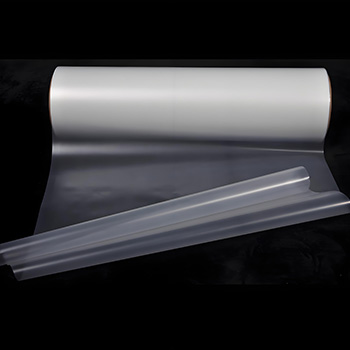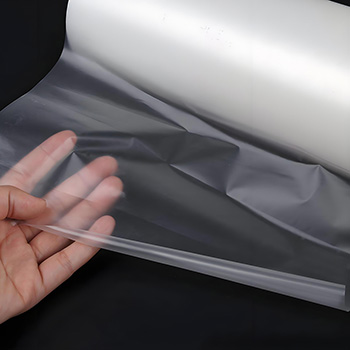As we all know, the aluminum-plastic film heat sealing layer CPP is directly in contact with the electrolyte, so the various properties of CPP have extremely high requirements, such as heat sealing strength, binding strength with aluminum foil, chemical stability, electrolyte resistance, stamping performance and so on. The CPP film produced by the dry process is generally produced by three layers of co-extrusion, each layer is designed to perform different functions, and the ultimate purpose is to meet the requirements of the packaging electrolyte. So how to judge whether the heat sealing layer CPP film in the aluminum-plastic film of soft coated lithium batteries meets the requirements of use? Here are some of the more critical indicators.

1. Heat sealing performance. It mainly includes sealing temperature and heat sealing strength. At present, in the highly competitive market environment, companies are trying to improve efficiency and reduce energy consumption, and the thermal sealing conditions of CPP films are becoming more and more demanding, putting forward the demand for low temperature thermal sealing, requiring CPP films to be sealed below 140 ° C. In terms of heat sealing strength, the industry generally requires that the heat sealing strength of the composite aluminum-plastic film should be above 60N/15mm, which requires low sealing while ensuring high heat sealing strength.
2. Seal evenly and turn white. Uniform white seal means that both sides of the seal should have an even white effect after peeling. This test is usually conducted after the composite, including one and two letters. One refers to the direct sealing of the seal after composite, without the need to apply electrolyte, while the second seal will be applied to the seal after the electrolyte is heated. Whether one or two, both sides should be evenly whitened after peeling. Through this phenomenon, it can be well proved that after the two surfaces are peeled, there is still CPP film protecting the aluminum foil on the surface, and there is no aluminum leakage. It can be well judged that the electrolyte has not passed through the CPP film into the aluminum foil layer, and then corroded the aluminum foil. Secondly, it can also be further explained that there is a strong binding force between CPP film and aluminum foil.
3. Electrolyte immersion test. Electrolyte immersion test is an important index to test the resistance of aluminum-plastic film to electrolyte. In the verification process, the user will cut the composite aluminum-plastic film into a spline with a width of 15mm and a length of about 100mm, soak it in a container equipped with electrolyte and 1000-1500ppm water, and put it in a static environment at 85℃, respectively test the peel strength between CPP and aluminum foil in different periods, such as 4 hours, 24 hours, 1 week, 2 weeks, 4 weeks. 9 weeks, etc., which is why the app validation took so long. How to evaluate the performance requirements of electrolyte resistance? The industry generally requires that the peel strength between the CPP film and aluminum foil is greater than 20N/15mm before the aluminum plastic film spline immersion electrolyte, and the peel strength is greater than 8N/15mm after the immersion electrolyte. Of course, the size of the peel strength in addition to the performance of the CPP film itself, and the use of glue and the choice of aluminum foil has a close relationship.
4. Stamping performance. Soft pack lithium battery is widely used, mobile phones, earplugs, electronic cigarettes, cameras, new energy vehicles, energy storage, etc. The battery size, shape and so on are very different, soft pack aluminum plastic film in this aspect of the advantage is more obvious, can be applied to all kinds of complex design and ensure high energy density, with good flexibility. Different applications, the stamping performance of aluminum-plastic film also put forward different requirements. Therefore, it is very critical to test the molding performance of aluminum-plastic film. Especially in the application of new energy vehicle power batteries, the stamping molding area is required to be larger, the depth is deep, and the stamping area cannot be damaged after the stamping is completed or the stamping area cannot be obviously white compared with other areas, so the performance of CPP films is put forward higher requirements.

The above are several key indicators of CPP film, and of course, other performance requirements can not be ignored. How to achieve or improve these functions, it is worth thinking about each manufacturer. With the gradual stabilization of the market in the 3C field, the growing demand for new energy vehicles and the further promotion of the demand for aluminum-plastic film in the energy storage market, the market share of the technology route of the soft coated lithium battery aluminum-plastic film is increasing, and the rapid development trend of the aluminum-plastic film industry is more and more clear. At present, the quality and performance of domestic aluminum-plastic film thermal sealing layer CPP film is still less than that of Japan, South Korea and other imported materials, which not only needs to improve the performance of domestic CPP film materials, but also needs to continuously optimize the preparation process to improve the comprehensive quality of CPP film required by aluminum-plastic film, which is also the direction of research workers and engineering and technical personnel need to focus on and research.

